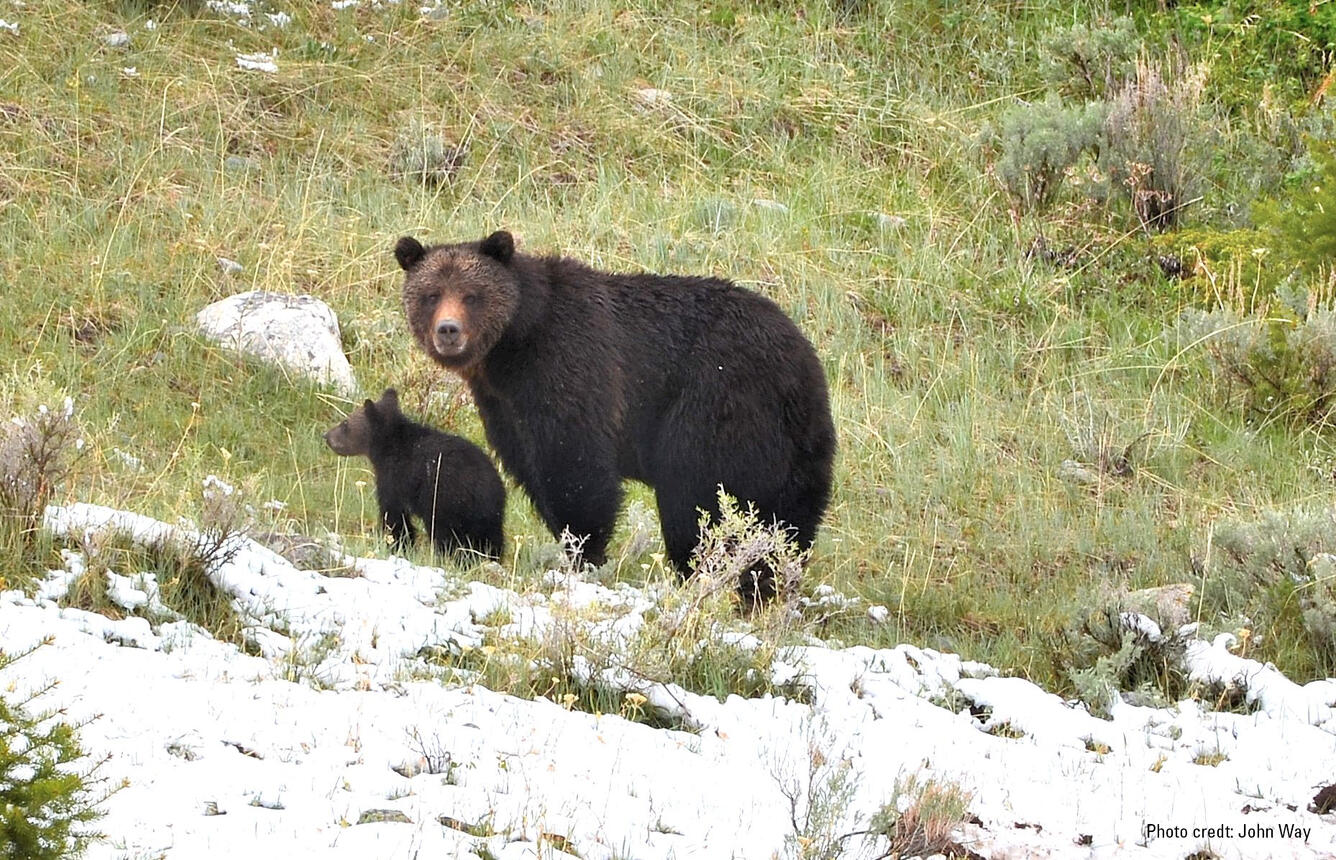BOZEMAN, Mont. – Genetic data show the grizzly bear population in the Greater Yellowstone Ecosystem has grown since the 1980s with no loss in genetic diversity, according to a report by the Interagency Grizzly Bear Study Team.
BOZEMAN, Mont. – Genetic data show the grizzly bear population in the Greater Yellowstone Ecosystem has grown since the 1980s with no loss in genetic diversity, according to a report by the Interagency Grizzly Bear Study Team.
Results indicate that the effective population size of Yellowstone grizzly bears, or the number of individuals that contribute offspring to the next generation, has increased 4-fold over a 25-year period. This provides evidence that Yellowstone grizzly bears are approaching the effective size necessary for long-term genetic viability.
"The increase in effective size of the Yellowstone grizzly bear population over the past several decades, with no significant change in genetic diversity, supports evidence of population growth based on traditional surveys," said Pauline Kamath, USGS ecologist and lead author of the study. "This is a key genetic indicator of a population’s ability to respond to future environmental change."
Researchers used several newly available techniques to assess trends in effective population size from a sample of 729 grizzly bears in the Greater Yellowstone Ecosystem, a region slightly smaller than South Carolina. Based on one of several methods, they found estimates of effective population size increased from approximately 100 bears in the 1980s to 450 in the 2000s. These numbers are smaller than estimates of total population size because not all animals in the population breed. Although an isolated population, grizzly bear genetic diversity remained stable and inbreeding was relatively low, 0.2 percent, over the time period.
The application of these new methods to monitor trends in effective population size of wildlife has been limited because it is difficult to measure and requires long-term data on individuals in the population. The isolated and well-studied population of Yellowstone grizzly bears provided a rare opportunity to examine the usefulness of this technique for monitoring a threatened species because of the breadth of genetic and demographic, gender and age, data that have been collected over decades. Grizzly bear populations in the lower 48 states were listed as threatened in 1975 under the Endangered Species Act.
"For long-lived species such as grizzly bears, a concerted effort is required to collect long-term genetic and associated demographic data. Four decades of intensive research on Yellowstone grizzly bears presented a unique opportunity to evaluate and compare genetic estimators for monitoring of wildlife populations." said Frank van Manen, USGS wildlife biologist and Team Leader of the Interagency Grizzly Bear Study Team.
The study demonstrates how genetic monitoring can complement traditional demographic-based monitoring, providing valuable tools for wildlife managers for current and future studies. It also underscores the effectiveness of long-term studies that provide detailed data to support a variety of analyses, providing researchers and managers a better picture of the status of populations of interest.
The article "Multiple estimates of effective population size for monitoring a long-lived vertebrate: an application to Yellowstone grizzly bears" is published in Molecular Ecology.
The study is a collaborative effort between the USGS, Wildlife Genetics International, the University of Montana, and the federal, state and tribal partners of the Interagency Grizzly Bear Study Team.
More information about Yellowstone grizzly bear studies can found on the USGS Northern Rocky Mountain Science Center website.
Get Our News
These items are in the RSS feed format (Really Simple Syndication) based on categories such as topics, locations, and more. You can install and RSS reader browser extension, software, or use a third-party service to receive immediate news updates depending on the feed that you have added. If you click the feed links below, they may look strange because they are simply XML code. An RSS reader can easily read this code and push out a notification to you when something new is posted to our site.


